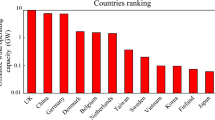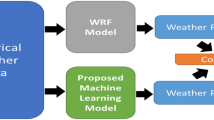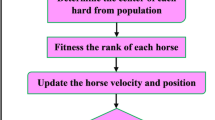Abstract
Seasonal total precipitation is one of the important meteorological variables and its prediction is useful for the supply of water to different sectors. This study aims to compare Seasonal Autoregressive Integrated Moving Average (SARIMA), Multilayer Perceptron (MLP), Adaptive Neuro-Fuzzy Inference System-Subtractive Clustering (ANFIS-SC), and ANFIS-Fuzzy Cluster Means (ANFIS-FCM) for the prediction of seasonal precipitation. The precipitation data were obtained for the 1951–2018 period from 8 stations located in different climatic zones of Iran. The stations and their climates are Anzali (per-humid moderate climate), Babolsar (humid moderate climate), Kermanshah (semi-arid cold climate), Shiraz (semi-arid moderate climate), Bushehr (arid warm climate), Shahroud (arid cold climate), Isfahan (extra-arid cold climate), and Zahedan (extra-arid moderate climate). The time-lagged precipitation as input for all models was chosen using the autocorrelation function (ACF), and the data were divided into two periods: 1951–2001 for training (75%) and 2002–2018 for testing (25%). Based on the evaluation criteria (root mean squared error [RMSE], normalized root mean squared error [NRMSE], Wilmott Index [WI], Akaike Information Criterion [AIC], and Bayesian Information Criterion [BIC]), results showed that the SARIMA stochastic model was more accurate than the artificial intelligence methods and had the least over- and under-estimations. MLs exhibited good prediction accuracy, but ANFIS-FCM had a little higher accuracy. Consequently, due to the high accuracy and simplicity, the stochastic model is reported as the best predictor for seasonal precipitation in all climates. In terms of the R2 values, the models showed better fitting in wet and normal years than in drought years. Further, the model predictions were more accurate in per-humid and humid areas than in arid and extra-arid climates. Also, the NRMSE values were in the range of 0.1 and 0.2, which indicated that SARIMA’s performance was medium and well. A significant result of this study was that results for different climates based on RMSE were completely opposite to those based on NRMSE, WI, and R2. This contrast was caused by the neglect of data range in the RMSE equation, so it is not a good choice to compare the results under different climates and it is better to use its normalized form “NRMSE.”








Similar content being viewed by others
References
Abbasi A, Khalili K, Behmanesh J, Shirzad A (2019) Drought monitoring and prediction using SPEI index and gene expression programming model in the west of Urmia Lake. Theor Appl Climatol 138(1-2):553–567. https://doi.org/10.1007/s00704-019-02825-9
Abdul-Aziz AR, Anokye M, Kwame A, Munyakazi L, Nsowah-Nuamah NNN (2013) Modeling and forecasting rainfall pattern in Ghana as a seasonal ARIMA process: The case of Ashanti region. Int J Humanit Soc Sci 3(3):224–233
Aghelpour P, Varshavian V (2020) Evaluation of stochastic and artificial intelligence models in modeling and predicting of river daily flow time series. Stoch Env Res Risk A 34:33–50. https://doi.org/10.1007/s00477-019-01761-4
Aghelpour P, Mohammadi B, Biazar SM (2019) Long-term monthly average temperature forecasting in some climate types of Iran, using the models SARIMA, SVR, and SVR-FA. Theor Appl Climatol 138(3-4):1471–1480. https://doi.org/10.1007/s00704-019-02905-w
Aghelpour P, Bahrami-Pichaghchi H, Kisi O (2020a) Comparison of three different bio-inspired algorithms to improve ability of neuro fuzzy approach in prediction of agricultural drought, based on three different indexes. Computers and Electronics in Agriculture, Volume 170, March 2020, 105279. https://doi.org/10.1016/j.compag.2020.105279
Aghelpour P, Guan Y, Bahrami-Pichaghchi H, Mohammadi B, Kisi O, Zhang D (2020b) Using the MODIS sensor for snow cover modeling and the assessment of drought effects on snow cover in a mountainous area. Remote Sens 12(20):3437. https://doi.org/10.3390/rs12203437
Aghelpour P, Mohammadi B, Biazar SM, Kisi O, Sourmirinezhad Z (2020c) A theoretical approach for forecasting different types of drought simultaneously, using entropy theory and machine-learning methods. ISPRS Int J Geo Inf 9(12):701. https://doi.org/10.3390/ijgi9120701
Aqil M, Kita I, Yano A, Nishiyama S (2007) A comparative study of artificial neural networks and neuro-fuzzy in continuous modeling of the daily and hourly behaviour of runoff. J Hydrol 337(1-2):22–34. https://doi.org/10.1016/j.jhydrol.2007.01.013
Bari SH, Rahman MT, Hussain MM, Ray S (2015) Forecasting monthly precipitation in Sylhet city using ARIMA model. Civil Environ Res 7(1):69–77
Bezdek JC (2013) Pattern recognition with fuzzy objective function algorithms. Springer Science & Business Media, Berlin. https://doi.org/10.1007/978-1-4757-0450-1
Bezdek JC, Ehrlich R, Full W (1984) FCM: The fuzzy C-means clustering algorithm. Comput Geosci 10(2–3):191–203. https://doi.org/10.1016/0098-3004(84)90020-7
Dabral PP, Murry MZ (2017) Modelling and forecasting of rainfall time series using SARIMA. Environ Proc 4(2):399–419. https://doi.org/10.1007/s40710-017-0226-y
Deo RC, Ghorbani MA, Samadianfard S, Maraseni T, Bilgili M, Biazar M (2018) Multi-layer perceptron hybrid model integrated with the firefly optimizer algorithm for windspeed prediction of target site using a limited set of neighboring reference station data. Renew Energy 116:309–323. https://doi.org/10.1016/j.renene.2017.09.078
Dunn JC (1973) A fuzzy relative of the ISODATA process and its use in detecting compact well-separated clusters. https://doi.org/10.1080/01969727308546046
Dwivedi DK, Kelaiya JH, Sharma GR (2019) Forecasting monthly rainfall using autoregressive integrated moving average model (ARIMA) and artificial neural network (ANN) model: A case study of Junagadh, Gujarat, India. J Appl Nat Sci 11(1):35–41. https://doi.org/10.31018/jans.v11i1.1951
Eni D, Adeyeye FJ (2015) Seasonal ARIMA modeling and forecasting of rainfall in Warri Town, Nigeria. J Geosci Environ Protec 3(06):91–98. https://doi.org/10.4236/gep.2015.36015
Ghamariadyan M, Imteaz MA, Mekanik F (2019) A hybrid wavelet neural network (HWNN) for forecasting rainfall using temperature and climate indices. In: IOP Conference Series: Earth and Environmental Science, vol 351. IOP Publishing, p 012003. https://doi.org/10.1088/1755-1315/351/1/012003
Halabi LM, Mekhilef S, Hossain M (2018) Performance evaluation of hybrid adaptive neuro-fuzzy inference system models for predicting monthly global solar radiation. Appl Energy 213:247–261. https://doi.org/10.1016/j.apenergy.2018.01.035
Haykin S (1999) Neural networks: a comprehensive foundation. MacMillan, New York
Hiremath SM, Patra SK, and Mishra AK (2012). ANFIS with subtractive clustering-based extended data rate prediction for cognitive radio.
Hossain I, Rasel HM, Imteaz MA, Mekanik F (2018) Long-term seasonal rainfall forecasting: efficiency of linear modelling technique. Environ Earth Sci 77(7):1–10. https://doi.org/10.1007/s12665-018-7444-0
Hossain I, Rasel HM, Imteaz MA, Mekanik F (2020) Long-term seasonal rainfall forecasting using linear and non-linear modelling approaches: a case study for Western Australia. Meteorog Atmos Phys 132(1):131–141. https://doi.org/10.1007/s00703-019-00679-4
Jahani B, Mohammadi B (2018) A comparison between the application of empirical and ANN methods for estimation of daily global solar radiation in Iran. Theor Appl Climatol 137(1-2):1257–1269. https://doi.org/10.1007/s00704-018-2666-3
Khosravi A, Nunes RO, Assad MEH, Machado L (2018) Comparison of artificial intelligence methods in estimation of daily global solar radiation. J Clean Prod 194:342–358. https://doi.org/10.1016/j.jclepro.2018.05.147
Kisi O, Zounemat-Kermani M (2016) Suspended sediment modeling using neuro-fuzzy embedded fuzzy c-means clustering technique. Water Resour Manag 30(11):3979–3994. https://doi.org/10.1007/s11269-016-1405-8
Kisi O, Karimi S, Shiri J, Makarynskyy O, Yoon H (2014) Forecasting sea water levels at Mukho Station, South Korea using soft computing techniques. Int J Ocean Climate Syst 5(4):175–188. https://doi.org/10.1260/2F1759-3131.5.4.175
Kisi O, Shiri J, Karimi S, Adnan RM (2018) Three different adaptive neuro fuzzy computing techniques for forecasting long-period daily streamflows. In: Big data in engineering applications. Springer, Singapore, pp 303–321. https://doi.org/10.1007/978-981-10-8476-8_15
Kisi O, Gorgij AD, Zounemat-Kermani M, Mahdavi-Meymand A, Kim S (2019) Drought forecasting using novel heuristic methods in a semi-arid environment. J Hydrol 578:124053. https://doi.org/10.1016/j.jhydrol.2019.124053
Lee J, Kim CG, Lee JE, Kim NW, Kim H (2018) Application of artificial neural networks to rainfall forecasting in the Geum River basin, Korea. Water 10(10):1448. https://doi.org/10.3390/w10101448
Maca P, Pech P (2016) Forecasting SPEI and SPI drought indices using the integrated artificial neural networks. Comput Iintellig Neurosci 2016:2016–2017. https://doi.org/10.1155/2016/3868519
Mahmud I, Bari SH, Rahman M (2016) Monthly rainfall forecast of Bangladesh using autoregressive integrated moving average method. Environ Eng Res 22(2):162–168. https://doi.org/10.4491/eer.2016.075
Malik A, Kumar A, Singh RP (2019) Application of heuristic approaches for prediction of hydrological drought using multi-scalar Streamflow drought index. Water Resour Manag 33(11):3985–4006. https://doi.org/10.1007/s11269-019-02350-4
Maroufpoor S, Sanikhani H, Kisi O, Deo RC, Yaseen ZM (2019) Long-term modelling of wind speeds using six different heuristic artificial intelligence approaches. Int J Climatol 39(8):3543–3557. https://doi.org/10.1002/joc.6037
McCulloch WS, Pitts W (1943) A logical calculus of the ideas immanent in nervous activity. Bull Math Biophys 5(4):115–133. https://doi.org/10.1007/BF02478259
Mekanik F, Imteaz MA, Gato-Trinidad S, Elmahdi A (2013) Multiple regression and Artificial Neural Network for long-term rainfall forecasting using large scale climate modes. J Hydrol 503:11–21. https://doi.org/10.1016/j.jhydrol.2013.08.035
Mekanik F, Imteaz MA, Talei A (2016) Seasonal rainfall forecasting by adaptive network-based fuzzy inference system (ANFIS) using large scale climate signals. Clim Dyn 46(9-10):3097–3111. https://doi.org/10.1007/s00382-015-2755-2
Moazenzadeh R, Mohammadi B (2019) Assessment of bio-inspired metaheuristic optimisation algorithms for estimating soil temperature. Geoderma 353:152–171. https://doi.org/10.1016/j.geoderma.2019.06.028
Moazenzadeh R, Mohammadi B, Shamshirband S, Chau KW (2018) Coupling a firefly algorithm with support vector regression to predict evaporation in northern Iran. Eng Applic Comput Fluid Mechan 12(1):584–597. https://doi.org/10.1080/19942060.2018.1482476
Mohammadi B, Guan Y, Aghelpour P, Emamgholizadeh S, Pillco Zolá R, Zhang D (2020) Simulation of Titicaca Lake water level fluctuations using hybrid machine learning technique integrated with Grey Wolf Optimizer Algorithm. Water 12(11):3015. https://doi.org/10.3390/w12113015
Nanda SK, Tripathy DP, Nayak SK, Mohapatra S (2013) Prediction of rainfall in India using Artificial Neural Network (ANN) models. Int J Intellig Syst Appl 5(12):1–22. https://doi.org/10.5815/ijisa.2013.12.01
Nyatuame M, Agodzo SK (2018) Stochastic ARIMA model for annual rainfall and maximum temperature forecasting over Tordzie watershed in Ghana. Journal of Water Land Develop 37(1):127–140. https://doi.org/10.2478/jwld-2018-0032
Pandey PK, Tripura H, Pandey V (2019) Improving prediction accuracy of rainfall time series By Hybrid SARIMA–GARCH modeling. Nat Resour Res 28(3):1125–1138. https://doi.org/10.1007/s11053-018-9442-z
Parsaie A, Haghiabi AH, Moradinejad A (2019) Prediction of scour depth below river pipeline using support vector machine. KSCE J Civ Eng 23(6):2503–2513. https://doi.org/10.1007/s12205-019-1327-0
Poul AK, Shourian M, Ebrahimi H (2019) A comparative study of MLR, KNN, ANN and ANFIS models with wavelet transform in monthly stream flow prediction. Water Resour Manag 33(8):2907–2923. https://doi.org/10.1007/s11269-019-02273-0
Rahimi J, Ebrahimpour M, Khalili A (2013) Spatial changes of extended De Martonne climatic zones affected by climate change in Iran. Theor Appl Climatol 112(3-4):409–418. https://doi.org/10.1007/s00704-012-0741-8
Rumellhart DE (1986) Learning internal representations by error propagation. Parallel Distribut Proc 1:318–362
Salas JD, Delleur J, Yevjevich W (1988) V. and Lane, WL Applied modeling of hydrological time series. Water Resources Publication, Chicago, USA
Tran Anh D, Duc Dang T, Pham Van S (2019) Improved rainfall prediction using combined pre-processing methods and feed-forward neural networks. J Multidiscip Sci J 2(1):65–83. https://doi.org/10.3390/j2010006
Valipour M, Banihabib ME, Behbahani SMR (2013) Comparison of the ARMA, ARIMA, and the autoregressive artificial neural network models in forecasting the monthly inflow of Dez dam reservoir. J Hydrol 476:433–441. https://doi.org/10.1016/j.jhydrol.2012.11.017
Wang S, Feng J, Liu G (2013) Application of seasonal time series model in the precipitation forecast. Math Comput Model 58(3-4):677–683. https://doi.org/10.1016/j.mcm.2011.10.034
Wang HR, Wang C, Lin X, Kang J (2014) An improved ARIMA model for precipitation simulations. Nonlinear Process Geophys 21(6):1159–1168. https://doi.org/10.5194/npg-21-1159-2014
Yan Q, Ma C (2016) Application of integrated ARIMA and RBF network for groundwater level forecasting. Environ Earth Sci 75(5):396. https://doi.org/10.1007/s12665-015-5198-5
Acknowledgements
This study was supported by the Bu-Ali Sina University Deputy of Research and Technology (Grant no. 99-227). The authors thank the reviewers for their valuable comments and the Iran Meteorological Organization (IRIMO) for providing the data used in this study.
Author information
Authors and Affiliations
Corresponding author
Ethics declarations
Conflict of interest
The authors declare that they have no competing interests.
Additional information
Responsible Editor: Broder J. Merkel
Rights and permissions
About this article
Cite this article
Aghelpour, P., Singh, V.P. & Varshavian, V. Time series prediction of seasonal precipitation in Iran, using data-driven models: a comparison under different climatic conditions. Arab J Geosci 14, 551 (2021). https://doi.org/10.1007/s12517-021-06910-0
Received:
Accepted:
Published:
DOI: https://doi.org/10.1007/s12517-021-06910-0




